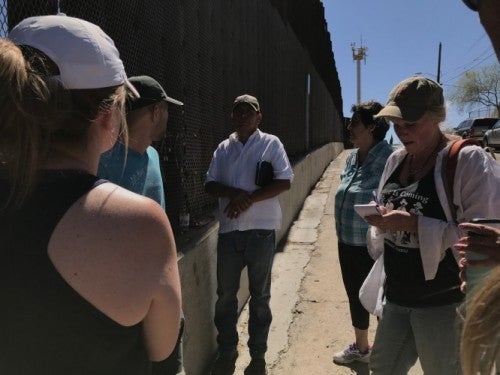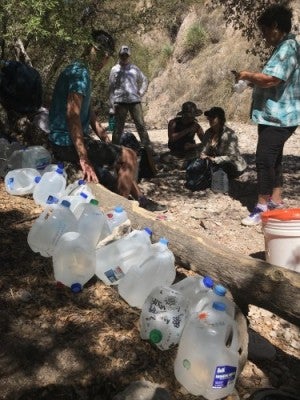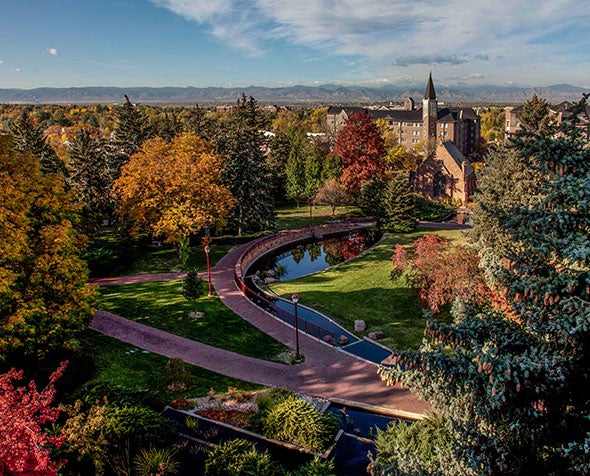Current Students
Photos of Central American children splashed the front pages of newspapers. On cable TV, pundits relentlessly argued about what to do with families that illegally crossed the border into the United States.
The world was watching, but Katie Weiseman and Grace Sullivan weren’t. They didn’t need to.
Instead, the two University of Denver graduate students sat in an Arizona immigration detention center, listening with their own ears to Wilmer’s story.
A Central American emigrant, seeking asylum from violence, Wilmer’s words proved to be just one of the many powerful lessons for students taking Immigration, Communication & Border Cultures, an immersive interterm course offered in early summer.
“The point of the class was to bring to light the voices you never get to hear,” said Sullivan (BA ‘12), who, like Weiseman, is a University employee pursuing a master’s degree in international and intercultural communication. “You don’t forget a class like that.”
For one week in June, students traveled to Tucson, and then moved south to the border for an immersive and intensive examination of

America’s hottest of hot-button issues. In their brief time on the border, professors Margie Thompson and Maria Suarez Toro packed their days with up-close experiences.
Guided by BorderLinks, a Tucson-based nonprofit promoting understanding and respect along the border, students walked along a “migrant trail” in the desert, delivering food and water to aid stations, where immigrants may find them. On another day, the class sat in a courtroom, watching a judge work through 60-70 deportation cases in about two hours, sometimes seeing five or six defendants at a time. On still other days, they joined conversations with various aid groups, made visits to checkpoints and, of course, stopped at the detention center.
In the evenings, the class of four students discussed the day’s events, sharing their perspectives and blogging about their experiences. Through group and individual reflection, students examined questions of law, human rights, security and privilege.
“Our professors were there to guide the conversation,” Weiseman said, “but for the most part, we were learning from people who were there experiencing the immigration crisis firsthand. We weren’t looking at government officials to tell us what was going on. We were looking at people who are affected.”

In preparation for the trip, the two professors armed their cohort with six hours of course work in Denver. But classroom exposure, the students discovered, can only do so much to preview such a powerful experience.
As Thompson noted, “It’s one thing to read it in a book or even see it in a film, but when you see it for yourself and talk to people who are in there and it impacts their lives, I think no matter what it’s very overwhelming.” After visiting the area seven years ago, Thompson, who teaches in the Media, Film and Journalism Studies program, knew she had to share the experience with her students. For five of the last six years, Thompson and Suarez Toro have taught this course and watched their students transform.
For Sullivan, who hopes to become a foreign service officer, and Weiseman, who plans to work at a university in student affairs, their interterm experience was inspiring. One of the most difficult things was returning to their comparatively carefree lives, knowing the immigrants they were leaving behind weren’t so lucky. In the immediate future, each hopes to become more involved in immigration advocacy, which Thompson would be happy to see her students pursue when they return to campus.
”In all my classes I encourage my students to become activists in a way,” she said. “I think all young people want to make a difference in the world and want to bring about social change. This experience motivates them even more.”
